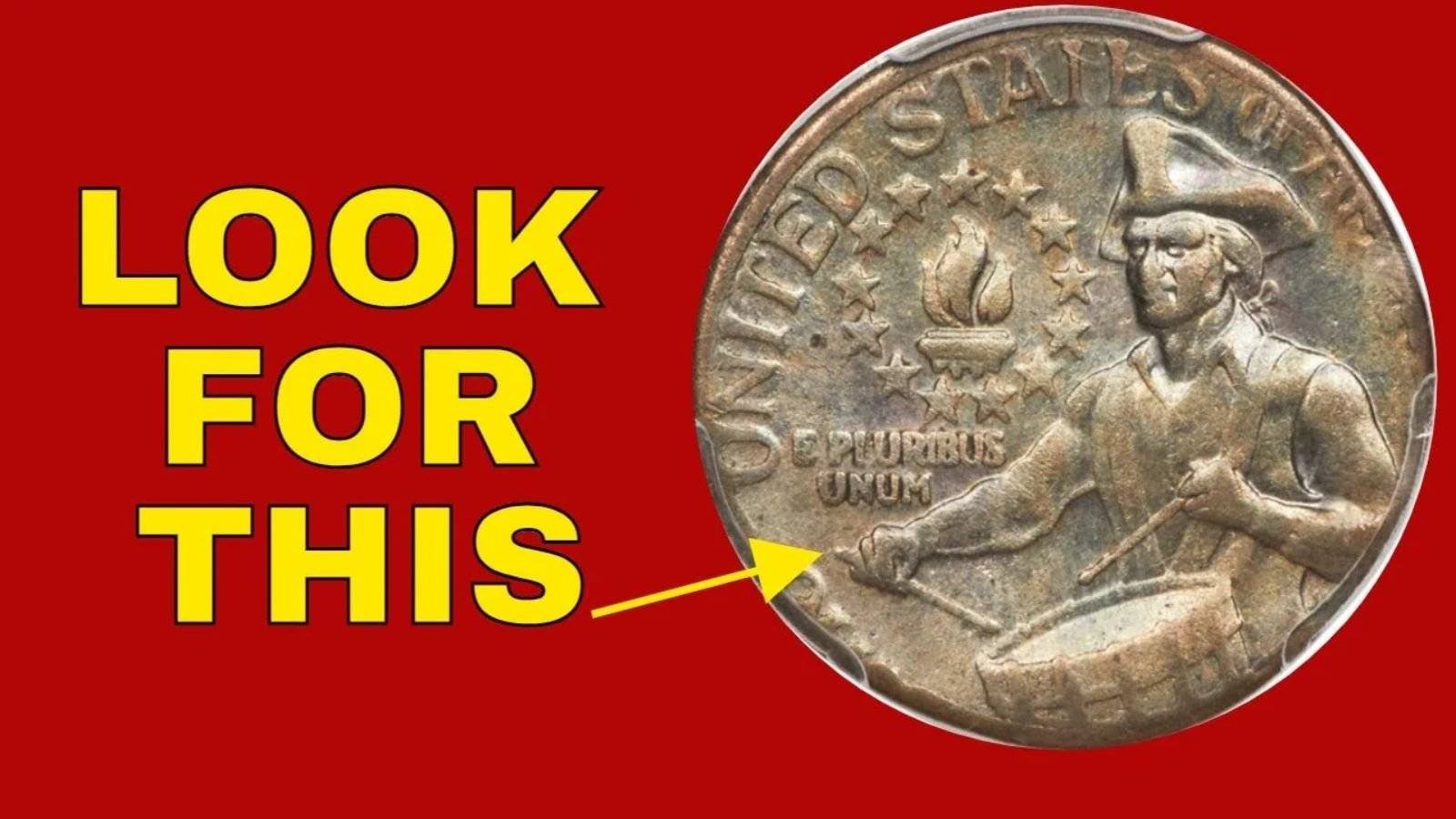In the world of numismatics, certain coins transcend their monetary value and become storied artifacts of history, coveted by collectors and enthusiasts alike. One such treasure is the Rare Bicentennial Quarter—a special commemorative coin released in honor of the United States’ 200th anniversary of independence. Minted between 1975 and 1976, these quarters were designed not only as currency but also as a tribute to American heritage. While most of these quarters are worth little more than their face value, a few rare variants, including one recently valued at a staggering $11 million, have taken the collecting world by storm. Astonishingly, some of these rare Bicentennial Quarters may still be circulating, hidden in plain sight among everyday pocket change.
Rare Bicentennial Quarter: Historical Context and Purpose
The Rare Bicentennial Quarter was introduced to commemorate America’s bicentennial—200 years since the Declaration of Independence in 1776. This special quarter features the dual date “1776–1976” beneath the profile of George Washington on the obverse (front), symbolizing its unique status. On the reverse, a colonial drummer boy, designed by artist Jack L. Ahr, replaces the traditional eagle. Surrounding him are a torch encircled by thirteen stars, representing the original colonies.
Unlike standard quarters, the Rare Bicentennial Quarter wasn’t intended to be just another coin in circulation. It was part of a broader celebration of national pride and historical remembrance. Still, with over 1.6 billion minted for general use, it was not initially expected to achieve legendary status—yet a few extraordinary specimens have defied those odds.
Composition and Variants: What Sets the Rare Bicentennial Quarter Apart
Most Bicentennial Quarters are made of a copper-nickel clad composition. However, the U.S. Mint also produced a limited number in 40% silver as part of uncirculated and proof coin sets. These silver-clad versions are the first tier of rarity but still not exceedingly valuable.
The real gems are the error coins and rare prototypes. Some Rare Bicentennial Quarters have been discovered with minting errors, such as double dies, off-center strikes, or incorrect metal compositions. One such coin, suspected to have been struck on a 95% silver planchet not meant for general circulation, is believed to be the $11 million dollar specimen. Others might have been early test runs or special mint samples, intended for internal purposes but somehow released into the public domain.
Why the Rare Bicentennial Quarter Can Be Worth $11 Million
The jaw-dropping valuation of $11 million for a Rare Bicentennial Quarter is the result of a perfect storm of rarity, historical significance, and immaculate condition. The coin in question likely possesses the following features:
- Silver Composition: Unlike typical clad versions, this coin might be composed of high-purity silver.
- Minting Error or Prototype Status: Rare and likely unique production anomalies significantly boost its value.
- Exceptional Condition: The coin is likely in a pristine state, possibly rated MS-70 or PR-70 by professional grading services.
- Auction and Collector Demand: High-profile auctions and private sales can drive prices exponentially, especially when elite collectors are involved.
It’s important to note that the value isn’t just tied to intrinsic elements but also to market dynamics. A rare item is worth what someone is willing to pay for it—and in this case, that amount was $11 million.
Still Circulating: The Possibility of Discovering a Rare Bicentennial Quarter
Despite their age, millions of Bicentennial Quarters remain in circulation today. While most are standard copper-nickel types, the possibility that rare variants have gone unnoticed in jars, drawers, or cash registers keeps coin hunters on high alert. It’s the idea that treasure could be lurking in plain sight that adds a layer of excitement to every transaction involving quarters.
If you’ve ever glanced at your change and noticed a quarter with a drummer boy on the back, you were holding a piece of history. And if you’re lucky, that quarter might just be one of the elusive, high-value Rare Bicentennial Quarters.
What to Look For in a Rare Bicentennial Quarter
If you’re serious about identifying a Rare Bicentennial Quarter, here are a few specific details to scrutinize:
- Date: Confirm it has the “1776–1976” marking.
- Reverse Design: Look for the drummer boy motif.
- Mint Mark: Coins with a “D” (Denver), “S” (San Francisco), or “P” (Philadelphia) mint mark may have different rarities, with “S” often indicating a proof coin.
- Metal Composition: Silver coins will typically have a duller finish and weigh more than standard versions. A solid silver edge (without the copper stripe) is a key giveaway.
- Errors and Die Variations: Look for unusual features like doubling of letters/numbers, misaligned prints, or any other irregularities.
- Condition: The cleaner and sharper the detail, the more likely it is to fetch a higher price.
Getting Your Coin Evaluated
If you believe you’ve stumbled upon a Rare Bicentennial Quarter, it’s crucial to handle it carefully. Do not clean or polish the coin, as this can damage it and drastically reduce its value. Instead, place it in a soft holder or container and consult a professional numismatist.
You can also submit your coin to a reputable grading service such as:
- PCGS (Professional Coin Grading Service)
- NGC (Numismatic Guaranty Corporation)
These organizations will authenticate the coin, assess its grade, and provide documentation—greatly enhancing its resale value if it turns out to be genuine and rare.
Frequently Asked Questions
1. Are all Bicentennial Quarters valuable?
No, most are worth between 25 cents and a few dollars depending on condition. Only specific Rare Bicentennial Quarter variants command high prices.
2. How can I tell if my quarter is silver?
Check the coin’s edge. A solid silver edge (no copper stripe) may indicate a silver composition. Weighing the coin (silver ones are slightly heavier) can also help.
3. Can I still find one in circulation?
Yes! Many people overlook them, and rare versions might still be mixed in everyday transactions.
4. What should I do if I think I have a Rare Bicentennial Quarter?
Do not clean it. Store it securely and have it appraised by a certified expert.
5. Why was the drummer boy chosen for the reverse design?
The U.S. Mint held a national competition, and Jack L. Ahr’s design was selected for its patriotic representation of the Revolutionary War era.
Final Thoughts: A Modern Treasure Hunt
The story of the Rare Bicentennial Quarter reminds us that history and value can coexist in the most unexpected places—even in the change jingling in your pocket. It’s a tale that captivates seasoned collectors and casual observers alike, blending numismatic significance with the thrill of discovery.
So next time you receive a handful of quarters, take a moment to look closer. Among the ordinary coins may lie a Rare Bicentennial Quarter—a small piece of American history that could be worth an extraordinary sum. With knowledge, vigilance, and a bit of luck, you just might uncover one of the most legendary coins still in circulation today.
Some Important Link
| Telegram Group | Click Here |
| WhatsApp Group | Click Here |
| Home Page | Click Here |










